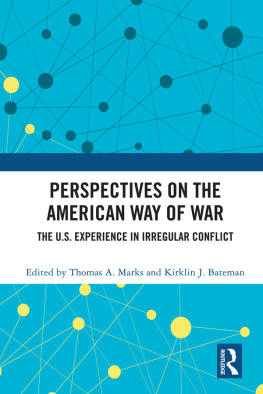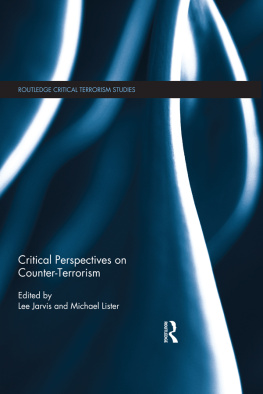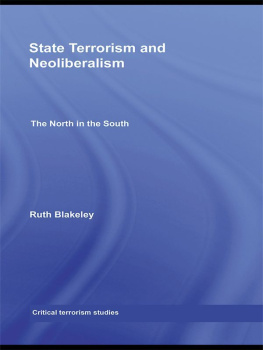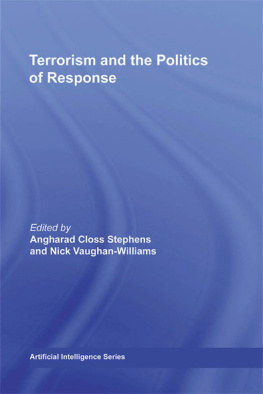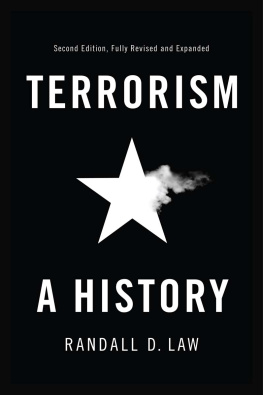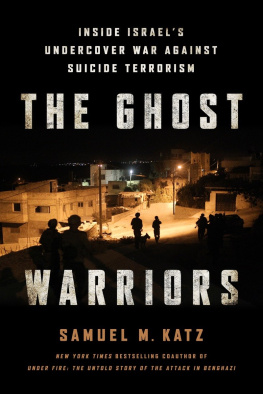Contents
List of Figures
Guide
Pagebreaks of the print version
SAINTS AND SOLDIERS
COLUMBIA STUDIES IN TERRORISM AND IRREGULAR WARFARE
COLUMBIA STUDIES IN TERRORISM AND IRREGULAR WARFARE
Bruce Hoffman, Series Editor
This series seeks to fill a conspicuous gap in the burgeoning literature on terrorism, guerrilla warfare, and insurgency. The series adheres to the highest standards of scholarship and discourse and publishes books that elucidate the strategy, operations, means, motivations, and effects posed by terrorist, guerrilla, and insurgent organizations and movements. It thereby provides a solid and increasingly expanding foundation of knowledge on these subjects for students, established scholars, and informed reading audiences alike.
For a complete list of titles see
SAINTS AND SOLDIERS
INSIDE INTERNET-AGE TERRORISM, from SYRIA to the CAPITOL SIEGE
RITA KATZ
Columbia University Press
New York

Columbia University Press
Publishers Since 1893
New YorkChichester, West Sussex
cup.columbia.edu
Copyright 2022 Rita Katz
All rights reserved
E-ISBN 978-0-231-55508-1
Library of Congress Cataloging-in-Publication Data
Names: Katz, Rita, author.
Title: Saints and soldiers : inside internet-age terrorism, from Syria to the Capitol siege / Rita Katz.
Description: New York : Columbia University Press, [2022] | Series: Columbia studies in terrorism and irregular warfare | Includes bibliographical references and index.
Identifiers: LCCN 2022011323 (print) | LCCN 2022011324 (ebook) | ISBN 9780231203500 (hardback)
Subjects: LCSH: Terrorism. | Right-wing extremists. | Online social networks. | Online hate speech. | Radicalization.
Classification: LCC HV6431 .K3168 2022 (print) | LCC HV6431 (ebook) | DDC 363.325/11dc23/eng/20220315
LC record available at https://lccn.loc.gov/2022011323
LC ebook record available at https://lccn.loc.gov/2022011324
A Columbia University Press E-book.
CUP would be pleased to hear about your reading experience with this e-book at .
Cover design: Milenda Nan Ok Lee
Cover photo: Reuters/Leah Millis
This book is dedicated to victims of terrorism, their families and friends, and all those whose lives were negatively impacted by violence driven and inspired by hate. Their stories, some of which are laid out on these pages, motivate us in the counterterrorism world to work diligently to try to prevent such attacks.
I also dedicate this book to my personal heroes, my mother and father. My father died to protect us; my mother devoted her life to my three siblings and me, working day and night to support us and provide for all our needs. Everything I do is inspired by their courage and relentless dedication.
Finally, my heartfelt thanks to my husband and four children. My lifes work has pulled us in many unexpected directions and continues to pose numerous challenges, yet they have always been there by my side. I am forever grateful for your support.

CONTENTS
F irst, I am extremely grateful to my staff at Search for International Terrorist Entities (SITE), whose research, investigations, and hard work have not only enriched this book, but also made the world a safer place.
Bruce Hoffman was kind enough to provide a 24/7 helpline, always available for gems of advice based on his wealth of knowledge regarding terrorism and violent extremism.
I would also like to thank my publisher, Caelyn Cobb, for her belief and perseverance, and fighting tooth and nail to make sure these words were turned into print.
Last but certainly not least, I owe an enormous debt of gratitude to Philip Cole, without whom this book would not exist. Phils countless hours of incredible patience and dedication, along with his true talent for words, helped me weave and shape this narrative into a finished product that went beyond my expectations.
W arning: many sections of this book delve into extremist-related events, chatter, and media regarding deadly terrorist attacks, sexual assault, and virulent hate speech.
Some names, locations, and dates recollected in this book have been changed to protect individuals privacy and safety.
I t was once true to say that terrorists used the internet.
Groups and movements that existed outside of the internet, in real life, exploited it as an asset. The Klan had websites. Hezbollah had websites. These groups used the internet to announce events, showcase achievements, and even fundraise.
But the internet is more than just an asset for todays new breed of terrorists. It is a necessity. These terrorists cannot be traced to a specific location, organization, or command structure like those of longer-standing entities. All the same, their existence cannot be explained solely by political, social, and economic shifts, as in decades past. They are products of movements created by the internet and exist almost entirely on it. But as mass shootings and events like the January 6, 2021, Capitol siege show, their real-life consequences are no less severe.
They are internet entities. And, as such, they are global entities, with virtually unlimited audiences to reach.
While this internet-reliant element is more visible than ever in the far right, it is a feature of contemporary terrorism in a larger sense. It cannot be overstated how foundational certain websites, social media environments, and subcultures have been in shaping recent extremist movements. The results are extremist hives devoid of physical bases, coherent ideologies, and organizational structures. Take away the internet, and theres barely anything left.
The online nature of these new terrorist movements has not translated to a lesser threat. Rather, the two most significant terrorist threats to the West in the last decade, the Islamic State (ISIS) and the new far right, are products of this very terrorist landscape.
I wrote this book to provide an anatomy of this new kind of terrorism through the story of the new far right and its many intersections with ISIS. Ive tracked both threats at the organization I head, the Search for International Terrorist Entities (SITE) Intelligence Groupthe former for over a decade and the latter (including its parent group, al-Qaeda) for over two decades. ISIS not only shares a grimly similar trajectory as the far right; it is far more intertwined with its neo-Nazi and white supremacist counterparts than is commonly acknowledged. Describing these paths side by side not only gives way to a better understanding of the far right and ISIS, but also of internet-age terrorism itself.
This story includes all the internet-based components that comprise this new far rightthe niche cultural forces that unite them, the conspiracy theories that fuel them, the online havens they fester inand how these items have played into horrific events, from a mass shooting in Pittsburgh to the January 6 storming of the U.S. Capitol.
As I see it, the story of this new kind of terrorism is best told through the interlocked series of smaller stories within it: the young attackers describing their radicalization in their manifestos (often in more ways than they intend); the game-changing influence of events like the 2004 beheading of American telecommunications contractor Nick Berg in Iraq and the 2019 Christchurch massacre; the establishment-bucking rise of this younger generation of far-right extremists and the complementary story of ISIS establishing the Caliphate to the outrage of the Global Jihads leading organization, al-Qaeda.


